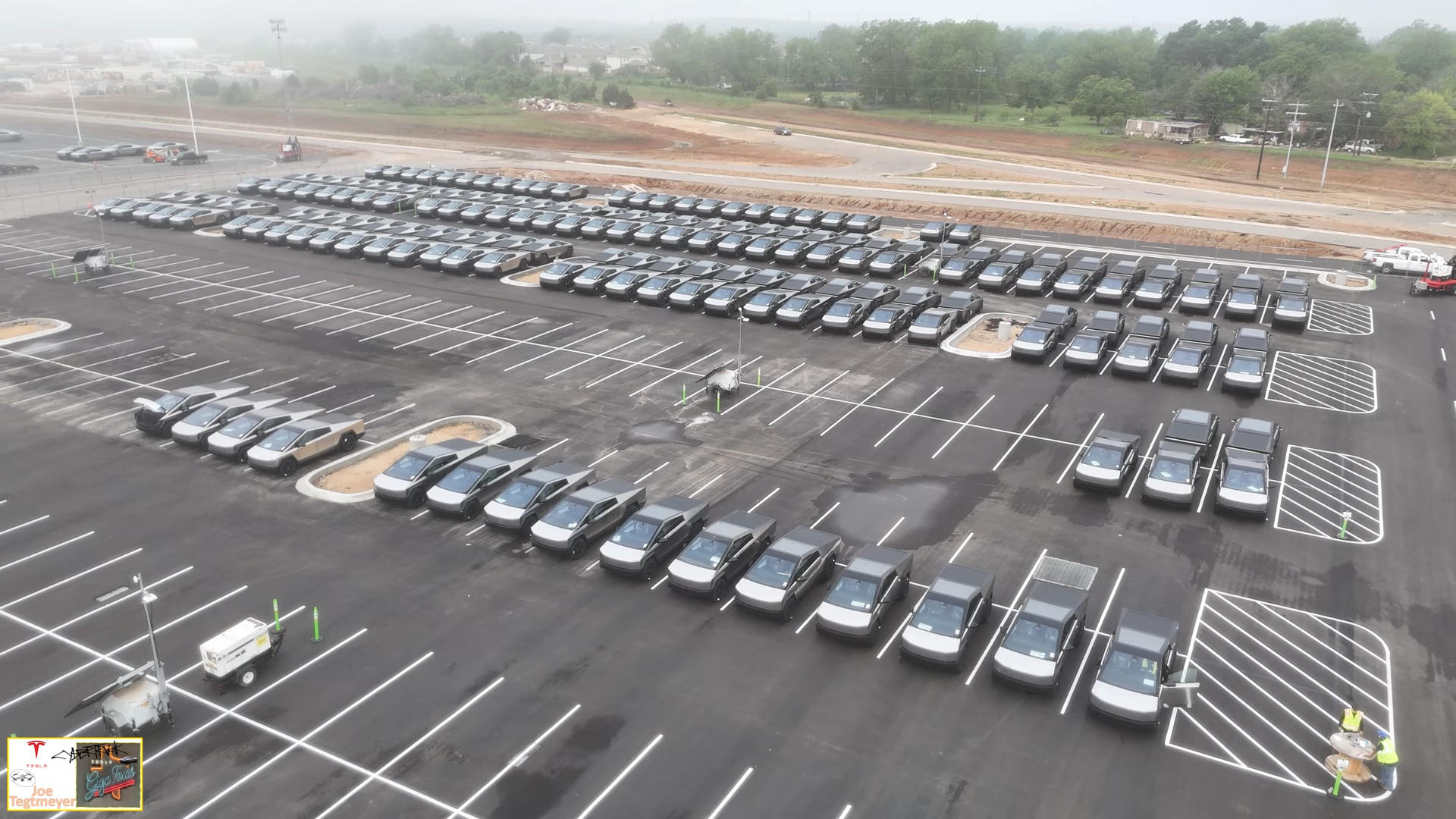
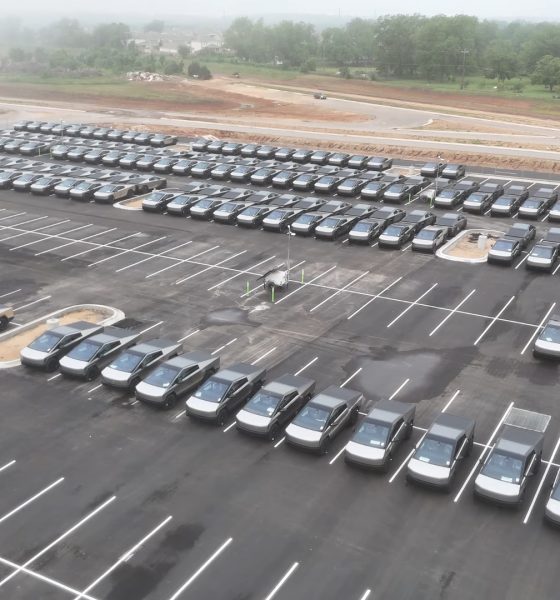
News
Tesla Cybertrucks head out of Giga Texas, mystery structure revealed
A recent drone flyover of Tesla’s Gigafactory in Texas shows fewer Cybertrucks than last week, along with the host sharing some insights into what a recently spotted mystery structure could be.
In the video, shared by Giga Texas observer and drone pilot Joe Tegtmeyer on Monday, you can see fewer Cybertruck units around the site than last week, along with trucks in the outbound lot being loaded up with the vehicles to be shipped to customers. The video also details a number of other ongoing construction projects at the site, despite being a little foggy.
Credit: Joe Tegtmeyer | YouTube Credit: Joe Tegtmeyer | YouTube Credit: Joe Tegtmeyer | YouTube Credit: Joe Tegtmeyer | YouTube Credit: Joe Tegtmeyer | YouTube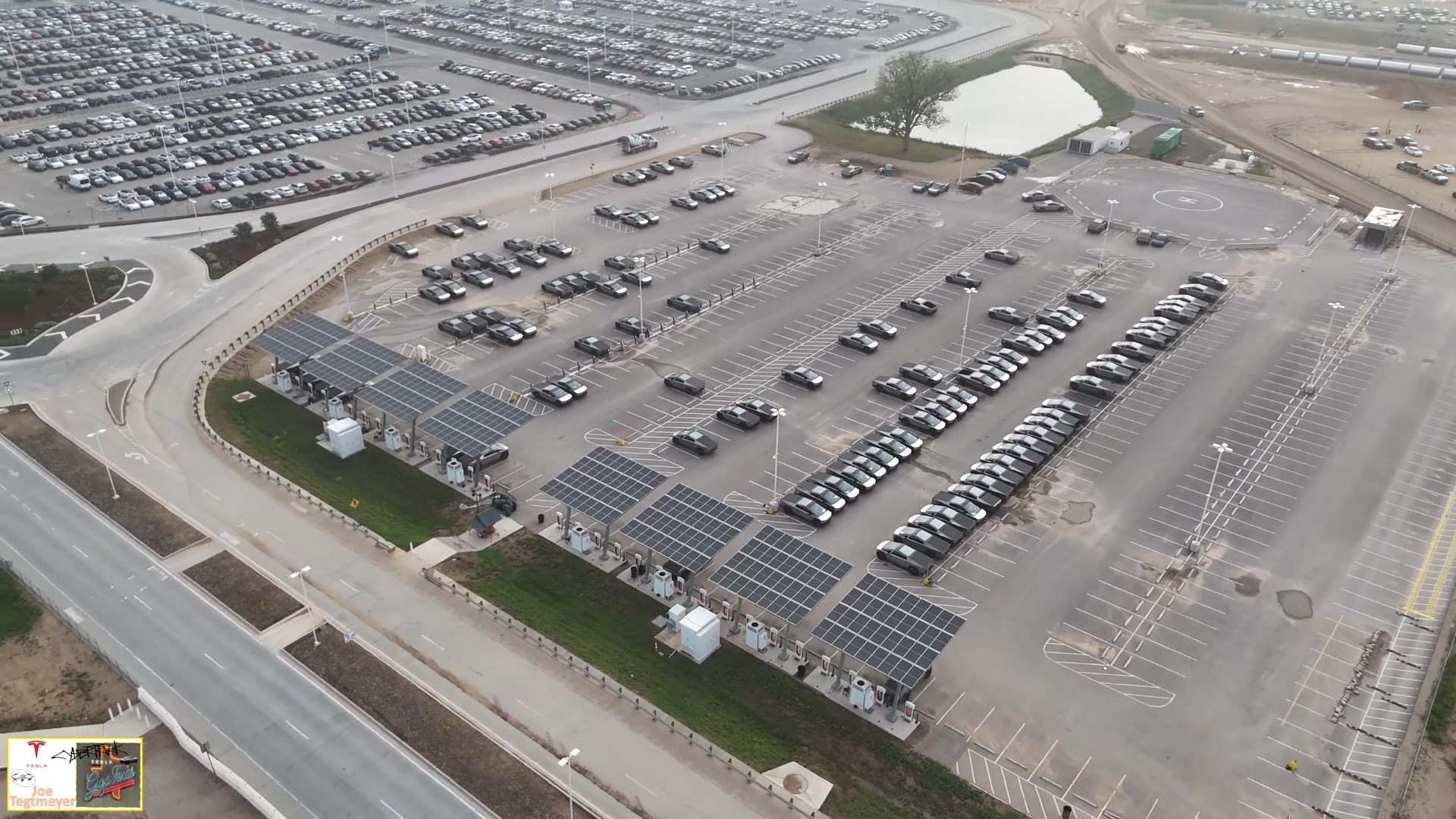

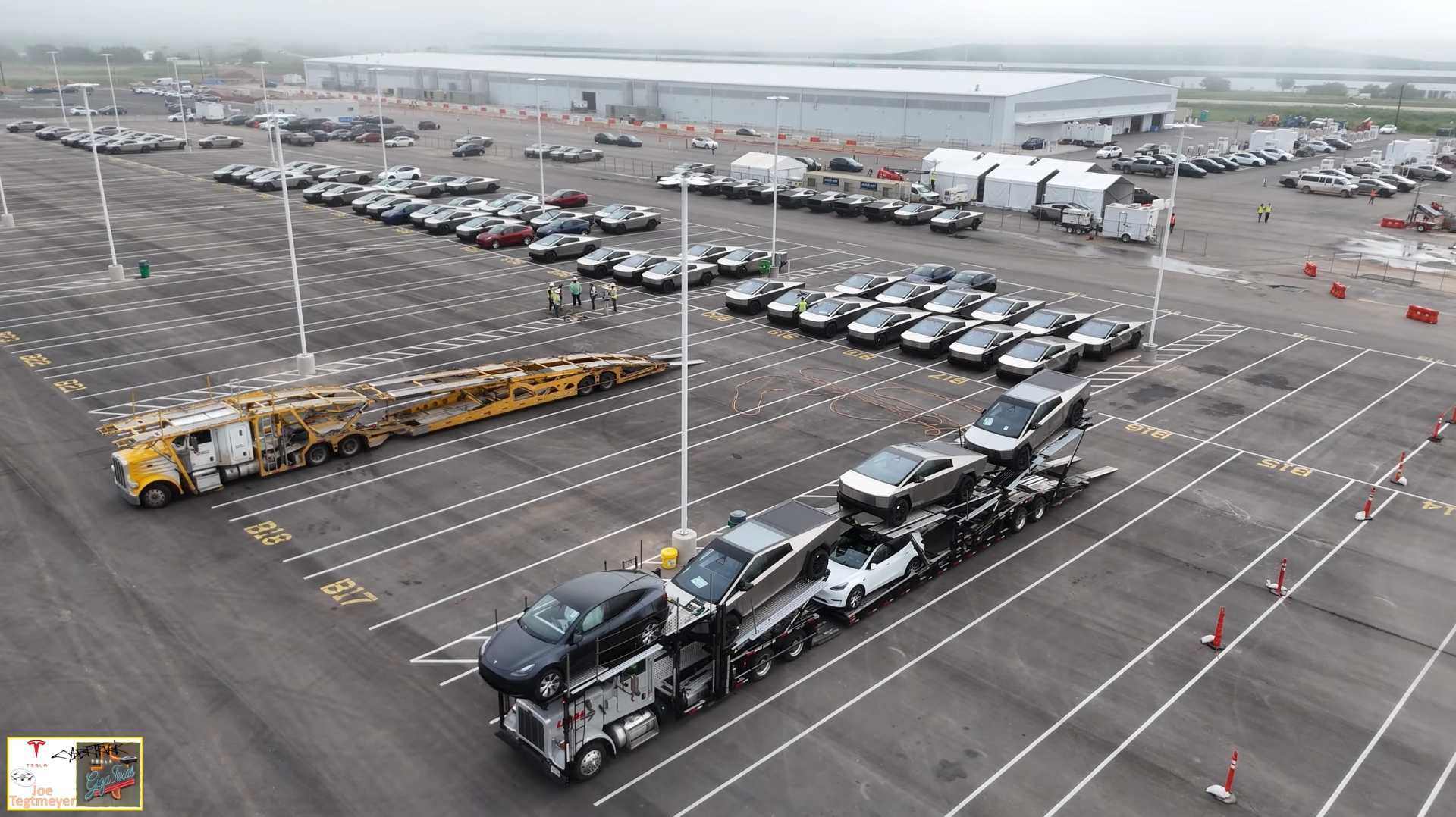
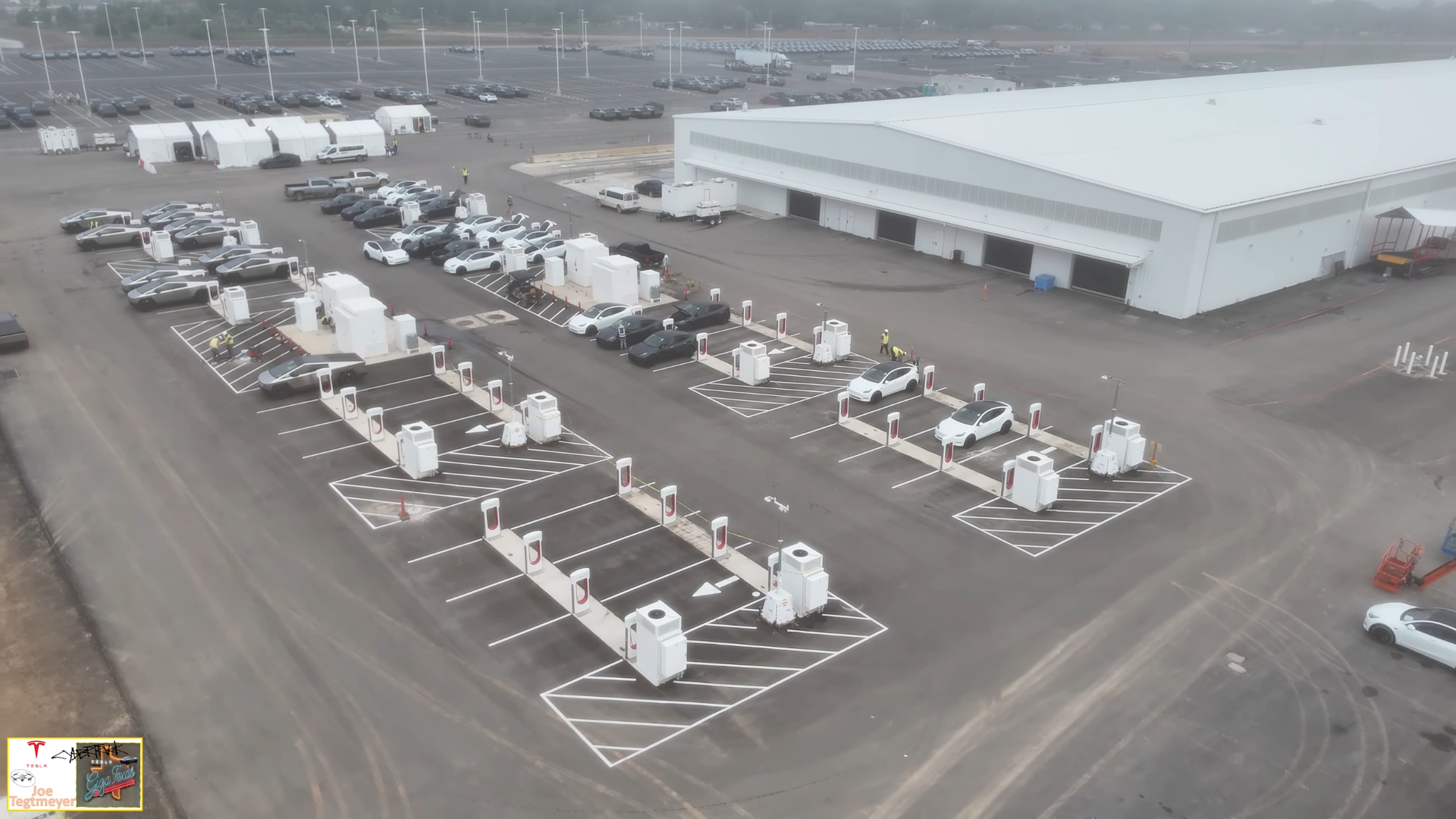
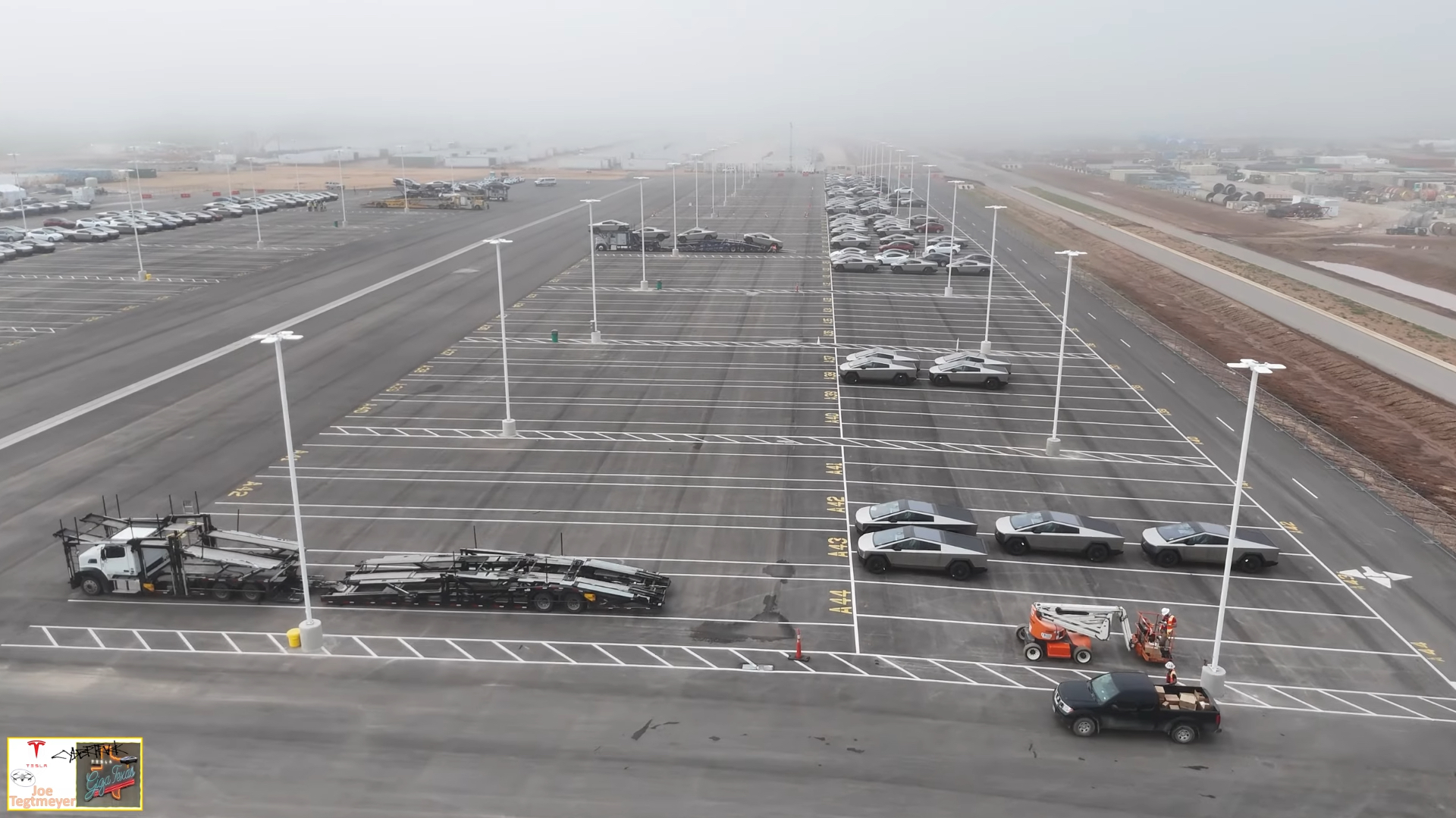
One such project includes a mystery structure on the plant’s south end, which Tegtmeyer and others have been trying to identify to no avail over the past few weeks. However, Tegtmeyer and some of his viewers have now spotted a few permits indicating that it appears to be a structural platform for a cooling tower, which will be used on the South End extension of the factory.
Tegtmeyer also talks about two other major construction projects, including a baghouse air filtration system, and preparations for a major air ducting system above the body-in-white part of the factory’s server room. While he notes that there have been reports of a potential Dojo project at the site requiring substantial cooling efforts, Tegtmeyer says he hasn’t been able to confirm whether that’s what this is or not.
See the full video from Tegtmeyer’s YouTube channel below.
The Cybertrucks are seen being shipped out after the company had to pause deliveries and issue a recall last week, due to an issue with the accelerator pedal. The issue takes very little time for Tesla Service technicians to fix, only requiring the installation of a small rivet at the pedal’s base.
It also comes as Tesla continues to ramp up production of the Cybertruck at Giga Texas, with the company seemingly nearing a weekly production rate of 1,000 units. This milestone has also been predicated on Tesla’s ability to build 1,000 Cybertrucks’ worth of 4680 battery cells per week, an achievement which it reached in March.
CEO Elon Musk and Vice President of Vehicle Engineering Lars Moravy recently weighed in on both in-house 4680 cell production and its supplier relationships during the Q1 2024 earnings call:
“You know, we’re making good progress on that,” said Musk in response to a question on the cell’s in-house production ramp. “But I don’t think it’s super important for at least in the near term. As Lars said, we think it will exceed the competitiveness of suppliers by the end of this year. And then we’ll continue to improve.”
“I think it’s important to note also that like the [4680] ramp right now is relevant to the Cybertruck ramp,” Moravy added. “And so, like we’re not going to just randomly build 4680s unless we have a place to put them. And so, we’re going to make sure we’re prudent about that.”
“But we also have a lot of investments with all our cell suppliers and vendors. They’re great partners, and they’ve done great development work with us, and a lot of the advancements in technologies and chemistry, they’re also putting into their cells.”
Tesla shares new Cybertruck features: Diff locks, Baja Mode, CyberTent Mode, and more
What are your thoughts? Let me know at zach@teslarati.com, find me on X at @zacharyvisconti, or send us tips at tips@teslarati.com.

News
Tesla FSD fleet is nearing 7 billion total miles, including 2.5 billion city miles
As can be seen on Tesla’s official FSD webpage, vehicles equipped with the system have now navigated over 6.99 billion miles.

Tesla’s Full Self-Driving (Supervised) fleet is closing in on almost 7 billion total miles driven, as per data posted by the company on its official FSD webpage.
These figures hint at the massive scale of data fueling Tesla’s rapid FSD improvements, which have been quite notable as of late.
FSD mileage milestones
As can be seen on Tesla’s official FSD webpage, vehicles equipped with the system have now navigated over 6.99 billion miles. Tesla owner and avid FSD tester Whole Mars Catalog also shared a screenshot indicating that from the nearly 7 billion miles traveled by the FSD fleet, more than 2.5 billion miles were driven inside cities.
City miles are particularly valuable for complex urban scenarios like unprotected turns, pedestrian interactions, and traffic lights. This is also the difference-maker for FSD, as only complex solutions, such as Waymo’s self-driving taxis, operate similarly on inner-city streets. And even then, incidents such as the San Francisco blackouts have proven challenging for sensor-rich vehicles like Waymos.
Tesla’s data edge
Tesla has a number of advantages in the autonomous vehicle sector, one of which is the size of its fleet and the number of vehicles training FSD on real-world roads. Tesla’s nearly 7 billion FSD miles then allow the company to roll out updates that make its vehicles behave like they are being driven by experienced drivers, even if they are operating on their own.
So notable are Tesla’s improvements to FSD that NVIDIA Director of Robotics Jim Fan, after experiencing FSD v14, noted that the system is the first AI that passes what he described as a “Physical Turing Test.”
“Despite knowing exactly how robot learning works, I still find it magical watching the steering wheel turn by itself. First it feels surreal, next it becomes routine. Then, like the smartphone, taking it away actively hurts. This is how humanity gets rewired and glued to god-like technologies,” Fan wrote in a post on X.
News
Tesla starts showing how FSD will change lives in Europe
Local officials tested the system on narrow country roads and were impressed by FSD’s smooth, human-like driving, with some calling the service a game-changer for everyday life in areas that are far from urban centers.

Tesla has launched Europe’s first public shuttle service using Full Self-Driving (Supervised) in the rural Eifelkreis Bitburg-Prüm region of Germany, demonstrating how the technology can restore independence and mobility for people who struggle with limited transport options.
Local officials tested the system on narrow country roads and were impressed by FSD’s smooth, human-like driving, with some calling the service a game-changer for everyday life in areas that are far from urban centers.
Officials see real impact on rural residents
Arzfeld Mayor Johannes Kuhl and District Administrator Andreas Kruppert personally tested the Tesla shuttle service. This allowed them to see just how well FSD navigated winding lanes and rural roads confidently. Kruppert said, “Autonomous driving sounds like science fiction to many, but we simply see here that it works totally well in rural regions too.” Kuhl, for his part, also noted that FSD “feels like a very experienced driver.”
The pilot complements the area’s “Citizen Bus” program, which provides on-demand rides for elderly residents who can no longer drive themselves. Tesla Europe shared a video of a demonstration of the service, highlighting how FSD gives people their freedom back, even in places where public transport is not as prevalent.
What the Ministry for Economic Affairs and Transport says
Rhineland-Palatinate’s Minister Daniela Schmitt supported the project, praising the collaboration that made this “first of its kind in Europe” possible. As per the ministry, the rural rollout for the service shows FSD’s potential beyond major cities, and it delivers tangible benefits like grocery runs, doctor visits, and social connections for isolated residents.
“Reliable and flexible mobility is especially vital in rural areas. With the launch of a shuttle service using self-driving vehicles (FSD supervised) by Tesla in the Eifelkreis Bitburg-Prüm, an innovative pilot project is now getting underway that complements local community bus services. It is the first project of its kind in Europe.
“The result is a real gain for rural mobility: greater accessibility, more flexibility and tangible benefits for everyday life. A strong signal for innovation, cooperation and future-oriented mobility beyond urban centers,” the ministry wrote in a LinkedIn post.
News
Tesla China quietly posts Robotaxi-related job listing
Tesla China is currently seeking a Low Voltage Electrical Engineer to work on circuit board design for the company’s autonomous vehicles.

Tesla has posted a new job listing in Shanghai explicitly tied to its Robotaxi program, fueling speculation that the company is preparing to launch its dedicated autonomous ride-hailing service in China.
As noted in the listing, Tesla China is currently seeking a Low Voltage Electrical Engineer to work on circuit board design for the company’s autonomous vehicles.
Robotaxi-specific role
The listing, which was shared on social media platform X by industry watcher @tslaming, suggested that Tesla China is looking to fill the role urgently. The job listing itself specifically mentions that the person hired for the role will be working on the Low Voltage Hardware team, which would design the circuit boards that would serve as the nervous system of the Robotaxi.
Key tasks for the role, as indicated in the job listing, include collaboration with PCB layout, firmware, mechanical, program management, and validation teams, among other responsibilities. The role is based in Shanghai.
China Robotaxi launch
China represents a massive potential market for robotaxis, with its dense urban centers and supportive policies in select cities. Tesla has limited permission to roll out FSD in the country, though despite this, its vehicles have been hailed as among the best in the market when it comes to autonomous features. So far, at least, it appears that China supports Tesla’s FSD and Robotaxi rollout.
This was hinted at in November, when Tesla brought the Cybercab to the 8th China International Import Expo (CIIE) in Shanghai, marking the first time that the autonomous two-seater was brought to the Asia-Pacific region. The vehicle, despite not having a release date in China, received a significant amount of interest among the event’s attendees.








